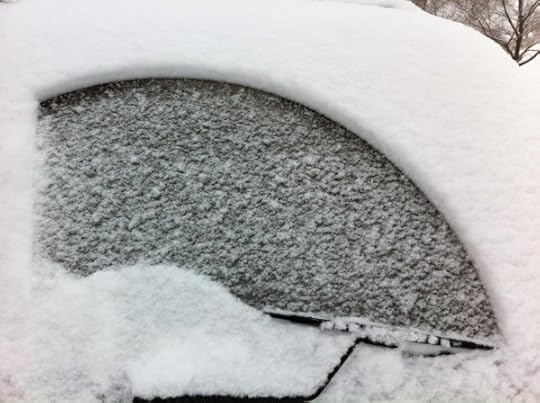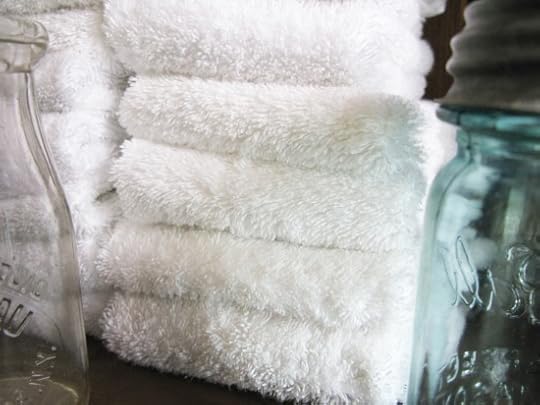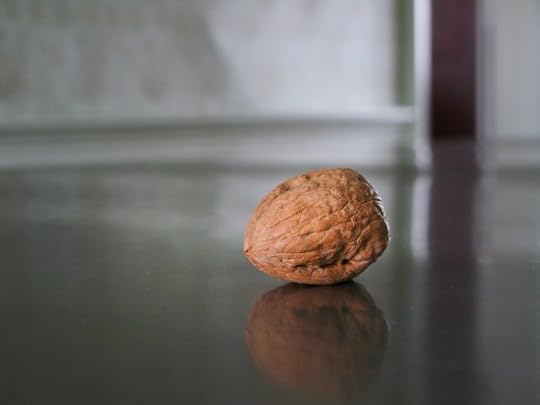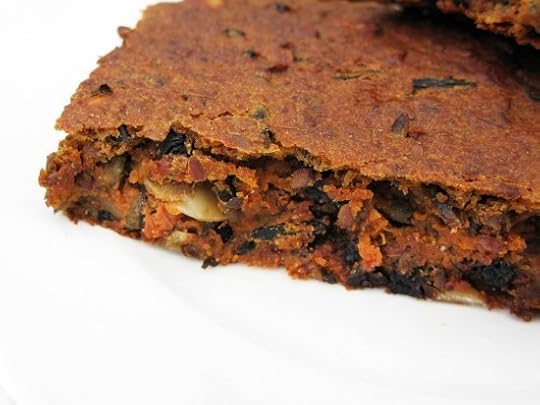Josh Kilmer-Purcell's Blog, page 80
January 19, 2013
Backyard Parables

When we first started installing the 52 raised beds that would become the Beekman 1802 Heirloom Vegetable Garden a curious neighbor stopped by and asked if we were putting in a cemetery. Rather than leading to our demise, the garden saved us. It recalibrated our lives so that we were more in-tune with the present. What we came to call “seasonal living”.
There are so many lessons to learn from the garden, which is why we were so thrilled when our friend, Margaret Roach, decided to go back to her roots for her latest book. She’s provided us with an excerpt that will have you aching to get your hands dirty.
from The Backyard Parables
Once upon a time, a faithless twenty-five-year-old got down on her knees and fashioned her first garden. It was a sorry thing, but also a matter of great pride, this perennial checkerboard imprinted on a sloping bit of ground outside her family’s kitchen door.
As if pricking through a preprinted canvas pattern of counted cross-stitch, she populated the tiny strip of inadequately cultivated soil with an equal number of two kinds of perennials. Half were low-growing, succulent rosettes called Sempervivum, or hens and chicks, houseleeks, or live-forever—since as she tucked these first roots in, she unwittingly entered a world where all the characters masquerade behind multiple nicknames, and where art and science collide so that there’s no straight answer to any- thing (which miraculously somehow makes everything perfectly clear). The others were Kniphofia (a.k.a., red-hot pokers, torch lilies, or tritomas) a tall thing with vaguely obscene wand-like flowers striped in hot sunset shades.
She did not leave proper space between, nor note the light conditions either plant required. But for that moment, there was peace on earth, and trust in her heart.
In the practice of blind devotion to living things called gardening, that is where I got started: assuming a posture of supplication and gridding out an alternating arrangement of plants that should never be combined, but what did I know? Just one thing, really:
I knew that the postage-stamp-sized color photos on their plastic nursery labels had made lust rise up in me. Over all the other choices at the garden center where I had innocently wandered that morning, seeking a distraction from things at home, I wanted these beauties for myself.
This is how it begins: with the deadly sin of lust. Then you kneel a lot, and when you finally get up again, you’re not meek or humble quite yet but filled with the germ of another transgression—that of pride, which is said to be the worst of all and often the root of the others. Like the knees of your trousers, you will never quite recover.
What has your time in the garden taught you? Please tell us in the comment section below

You can purchase the book by clicking here
January 17, 2013
Six Tips for Dry Winter Skin
There’s a ton of advice out there for how to soothe dry winter skin. The issue, we find, is that it’s mostly the same. After five winters in upstate New York…we know dry skin. And we’ve developed some real, honest-to-goodness helpful tips to avoid it. Not the same old “drink a lotta water, stay out of the wind, yadda yadda yadda.” Make these six tips part of your routine and we promise you’ll have a smoother, less itchy winter.
1. Pre-moisturize. Why moisturize only after the damage is done? Putting on lotions before bedtime is good. But it’s more important to put some on before going into the harsh outdoors.
2. Don’t get Steamed & Drip Dry – Taking a long hot shower or bath doesn’t actually help hydrate your skin. Your skin doesn’t soak up water from the outside. A long hot bath or shower can actually dry out your skin, because it can dissipate your skins natural oils, which are then absorbed further when you dry off. Which brings up the second part of good winter shower habits: when exiting the tub, don’t completely dry off before putting on moisturizer. (Granted this is easier if your bathroom is warm. Try a space heater placed well away from tub or sink.)
3. Dress Too Warmly – Believe it or not, your skin benefits from a little sweat. Your skins natural moisturizer, sebum, is produced by your sebaceous glands. These glands slow production when they’re cold. Keeping warm, and keeping moving, helps boost the skins natural sebum.
4. For Once, It’s Not All About Water – While there are millions of reasons why you need to stay hydrated, drinking excess water does nothing to further hydrate your skin. So in addition to being adequately hydrated, you’ll also need to eat foods rich in essential fatty acids – like walnuts, salmon, flaxseed, olive oil, and pasture-raised meats, and wild rice. Try our Pumpkin Nutty Health Bar for Dry Skin.
5. Shiver in the Car – During the winter it’s tempting to turn up the heat whenever you can, especially in small enclosed spaces like your car. But the combination of high, dry heat and swift moving air from vents will dry out your skin faster than anything. Keep your car at a moderate temperature…don’t turn up the heat just because you can.
6. Use only Natural Soaps - like Beekman 1802 Soap. Real soap produces glycerin as it’s made. (The process called saponification.) Most commercial soap bars and gels remove the glycerin (it can be sold more expensively for other uses) and replace it with detergent. Only real soap contains glycerin.
Chemically Engineered

Take a look at the label on the back of one of your skincare products.
The average person exposes their skin to over 200 chemicals every day, and about 60% of these chemicals can be found floating in the bloodstream.
Your skin is your body’s largest living breathing organ. When you put chemicals on it, your skin “ingests” them. You wouldn’t choose to eat, drink or even lick a chemical cocktail, so why force your skin to? Why do you think so much animal testing goes on? Because many of the chemicals can be toxic when they touch the skin, leaving rashes, burns, and worse.
When we first started Beekman 1802, our goal was to create an all-purpose “Soap for Sensitive People” using only the purest ingredients. Our skin is exposed to enough chemicals and pollutants during the course of day; we certainly don’t need more to clean them away.
Beekman soaps contain ONLY goat milk, olive oil, soy oil, coconut oil, lye and essential oil blends.
Cleopatra would bathe in goat milk to restore her skin from the exposure to the arid desert air. It’s true. Goat milk is exceptionally moisturizing, but it also has the same pH as human skin, so it doesn’t lead to excess drying. Our Beekman 1802 bars can be used to cleanse face, body and even your hair.
Many commercial soaps use petrochemical byproducts which allow them to make cheaper products in larger quantities, but these can be irritating to the skin. Synthetic fragrances are then added to mask the smell. These, too, can irritate the skin (and the nose!).
In our scented soaps, we use only blends of essential oils, and even then at very small amounts so that the scent is light and never lingers on the skin.
Beekman 1802: seeking to make the world a more beautiful place from the outside in.
Five Beautiful Things

Roasting Everything
This time of year, our oven is always on. Tomas and I are big fans of roasted vegetables. Not only does the roasting process render a delicate sweetness and earthy tenderness to the vegetables, but there is so much you can do with them once they’ve been taken out of the oven. You can serve them as traditional side dishes, cool them and use them in salads and pasta sauces or puree them and use them as spreads. I’ve listed the roasting instructions for ten of my favourite vegetables and selected five beautiful images of roasted goodness! Happy roasting!
Beets:
Roasted beets taste wonderful, either warm or cold. You can cut them into small wedges and use them in salads or thinly slice them for sandwiches. To roast, Trim stems and roots, drizzle with olive oil and wrap in parchment-lined foil. Roast at 450 until tender, about one hour. Let cool slightly and then peel.
Plum Tomatoes:
Roasted tomatoes are excellent on their own or used in salads and pastas. Cut tomatoes in half; remove seeds and stems. Place on parchment-lined baking sheet, cut side up; drizzle with olive oil and fresh herbs such as marjoram or thyme. Roast at 400 for five minutes, then reduce heat to 300 and continue slow roasting for one hour and 45 minutes.
Carrots:
The perfect companion to roast beef or chicken, roasted carrots have a sweet and earthy flavour. Peel carrots and toss in a baking pan with olive oil, sea salt and ground pepper. Roast at 400, turning ocasionally until tender and carmelized to an amber brown, about 35 minutes.
Zucchini:
Roasting zucchini enhances their delicate flavour and gives them a slightly charred, crisp exterior. Cut zucchini into one-inch thick rounds. Toss in a baking pan with olive oil, sea salt and ground pepper. Roast at 450, turning occasionally, until tender and carmelized, about 15 minutes.
Asparagus:
Roasted asparagus is an excellent side dish for salmon or chicken. Cut off the tough ends and if they’re thick, peel them. Place on a parchment-lined baking sheet and drizzle with olive oil, sea salt and ground pepper. Roast at 400 for 25 minutes. Drizzle lightly with lemon before serving.
Garlic:
Roasted garlic has a rich, mellow flavour that bears little resemblance to the pungent strength of fresh garlic. It is wonderful spread on small toasts or crackers, or mixed with vegetables. Trim tops about ¼ inch. Place in a baking dish, cut side up, drizzle with olive oil and cover the dish with foil. Roast at 425 until soft, about 40 minutes. Squeeze cloves out of skins before serving.
Potatoes:
With crackled skins and soft centers, these are a welcome addition to salads or a traditional side dish to meat. On a baking sheet, toss small potatoes with olive oil, sea salt and ground pepper, plus herbs if desired. Roast at 425 until tender, about 45 minutes.
Bell Peppers:
Roasted peppers are flavourful right from the oven or can be stored in olive oil in the fridge for up to two weeks. Serve cooled roasted bell peppers on sandwiches or use in salads. To roast, halve peppers; remove seeds and ribs. Place cut side down on a baking sheet and roast at 500 until charred, about 15 minutes. Cool, peel off charred skins and slice.
Onions:
Peel and cut onions into wedges. Toss in olive oil in a baking pan. Roast at 400 until caramelized, about 50 minutes, turning occasionally. Serve roasted onions as a side or puree in a food processor to make a condiment for steaks or sandwiches. Store the puree up to one week in the fridge.
Eggplant:
Eggplant can be roasted whole or in slices, like zucchini. The flesh, once roasted, can be made to use baba ghanoush, a popular Middle Eastern spread. Pierce the skin of the eggplant in several places with a knife. Roast on a lined baking sheet at 400 until soft, 35 to 40 minutes. Cool; slice open and scoop out the flesh.

Photos:
Whatkatieate.blogspot.com
Awelltraveledwoman.tumblr.com
Shewearsmanyhats.tumblr.com
Houseofbrinson.com
Dailydoseofstuff.tumblr.com
Andrew Ritchie is the creator of Martha Moments, a blog devoted Martha-Stewart related content and her community of supporters. He lives and works in Toronto, Canada, and has been a longtime friend of Brent & Josh, Beekman 1802 and Sharon Springs. Each week he’ll scour the world (wide web) to find the 5 most beautiful things to inspire you. Follow Andrew on Pinterest.
January 16, 2013
For a Few Hours, It Snowed.





<
>
It snowed today.
That’s it.
Not a lot. Not a dusting.
It wasn’t the soft blanket-y holiday-type snow. Or a SNOWPOCALYPSE.
Just some snow.
Not a single person went into their driveway with a yardstick to measure it. No schoolkid imagined a better tomorrow.
It was just a little more snow on top of last week’s dirty leftover snow. Next week, it’ll be last week’s dirty leftover snow.
This wasn’t snuggly hot chocolate snow. It was tepid-third-cup-of-coffee-that-had-been-left-on-the-burner-for-most-of-the-morning snow.
A few folks delayed their errands. But only till they heard the plow go by. They needed something from Rite Aid that they forgot once they got there. Which was a pain, because afterall, they’d gone out in the snow. They bought other things so as not to waste the trip.
There were no curly cue drifts to marvel at. It was slouchy snow. Slumpy teenage snow. It was the sky saying “I’m bored.”
It’s the sort of snow that clumps up behind your tires. Until it falls off. Or you kick it.
The goats checked it out. Meh.
Then it stopped snowing.
There’s none planned tomorrow. Or the next day.
It was the sort of snowfall that exists for no other reason than to actively remind you that it’s mid-January.
It was just snowblesse oblige.
Pumpkin Nutty Health Bar for Dry Skin
Treating dry skin from the outside is only half the battle. There’s no amount of lotions or potions that will give you smooth, supple skin unless you have the basic nutritional foundation for great skin. Foods rich in Omega 3 & 6 fatty acids; Vitamins A, C & E; zinc, sulfur, silica, and more are as vital to your skin’s health as keeping adequately hydrated.
We developed this health bar recipe specifically to help with dry skin in winter. Every ingredient is jam-packed with nutritional elements specifically chosen for your skin. It’s a great, not-too-sweet breakfast bar that stores well in either the refrigerator or freezer. Remember to drink a full glass of water with each bar to get the full benefits.
Beekman 1802 Pumpkin Nutty Health Bar
Note…these bars are not sweet dessert bars. If you prefer a sweeter treat, add a 1/2 cup of granulated sugar in addition to the sweeteners already listed.
1 cup butternut squash or pumpkin puree (Vitamin A)
3/4 cup finely ground raw walnuts (Omega 3 Fatty Acids)
1 1/2 cup cooked wild rice (Omega 3 Fatty Acids; viatmins A, B, E; minerals/antioxidents)
1 ripe avocado (Vitamins C, E and Monosaturated Fats)
1/2 cup flax seed, whirled briefly in coffee grinder (Omega 6 Linolic Acids)
1/2 cup honey
1/2 cup brown sugar
3 eggs (sulfur)
2 teaspoons cinnamon
1 1/2 cups spelt flour (Silica)
1 cup pumpkin seeds (Zinc)
1 cup dried blueberries (Vitamin B)
Optional 2 cups dark chocolate chips (Anti-oxidants)
Preheat oven to 325F. Mix together all ingredients in stand mixer. Spread mixture very evenly in 9” x 13” baking pan. Bake for approximately 45 minutes. Allow to cool completely in refrigerator. Cut into bars.
January 14, 2013
Too Shea
The very first winter at Beekman farm was rough. Literally. Having spent the last several years of our lives in the rarefied office environments of Manhattan, our skin was not used to facing the harsh elements. Because the relative humidity – moisture in the air – gets so low in the cold season, winter weather dries out our skin. Indoor heating also lowers humidity, depriving the skin of moisture. In the cold weather, many of us develop something commonly called “winter itch” or eczema – dry, itchy, flaky skin.
In addition to using the goat milk soap that would eventually make Beekman 1802 famous, we started working on other chemical-free products that could help protect and restore our skin. First came the Stick of Butter—a solid lotion stick made using goat milk that could travel right along with you, even on an airplane. This was great for lips and routine use on the hands. But for those areas of the body REALLY prone to drying, like the elbows, knees, and heels, we wanted an effective spot treatment.
So was born the Tub of Butter which blended goat milk with the only thing we could think that would be more emollient – Shea butter. Shea butter is a slightly yellowish or ivory-colored fat extracted from the nut of the African Shea tree (Vitellaria paradoxa). The Shea nut is used both for its fruit (which is eaten,) and its oil (which used in skin care products and also for cooking.) While we love Shea butter for it’s moisturizing properties in the winter, it’s also used by persons living in the Sahara Desert to keep from losing too much hydration in the hot dry winds.

Photo courtesy of TreeAid. http://www.treeaid.org.uk/
While Shea butter was widely used in Western cosmetics from the 1930′s – 1960′s, in the last part of the 20th century it was replaced in most beauty products by cocoa butter, which was cheaper to import. But Shea butter has some interesting natural SPF and anti-inflammatory properties that cocoa butter doesn’t, and has seen a resurgence in popularity recently. We’re often asked why we don’t produce traditional lotions. The answer is that any liquid lotion or soap requires chemical preservatives and stabilizers, which we prefer to avoid. Shea butter, however, has a naturally long shelf life.
Shea butter is also a vital part of some rural African economies, where it is harvested and processed by women. In fact, it’s sometimes referred to as “Womens’ Gold” since in some regions the harvesting and processing of Shea nuts is one of the only opportunities for income for African women. In fact, the Mali government produced the two videos below for its national television to help teach women how to harvest and process Shea nuts more efficiently and profitably.
Beekman 1802 is a beauty brand that has grown into something much more, but at our core is the desire to make beautiful things and sometimes the beautiful thing is you.
To see all Beekman 1802 Skin Care click here.
January 13, 2013
Leftover Oatmeal “Cakies”
A little while ago we shared our method for cooking steel cut oatmeal in a slow cooker overnight, and setting up an “Oatmeal Toppings Bar” for guests. We recently had some overnight guests who asked us what we do with the oatmeal leftover at the end of the morning. Even though we both love most leftovers, neither of us care much for glue-y, day old oatmeal.
But we don’t waste anything at Beekman 1802 Farm. When we have pigs, any leftover oatmeal goes into a slop bowl for them. But when we don’t, we use the pre-cooked oatmeal to make something like a cross between a cookie and a cake. It’s not too sweet (like a scone,) and is perfect to have with a cup of tea in the afternoon. Plus it’s different every time depending on what sort of toppings we had in the original oatmeal. And you can toss in new additions when making the batter as well. Basically, it’s a recipe that evolves with your mood. Give it a shot and then let us know how you would adapt it in the comment section.
Beekman 1802 Leftover Oatmeal “Cakies”
1 – 2 cups cooked oatmeal. Any spices, fruit, etc that has been mixed into it already is fine. The leftover oatmeal should be about the consistency of paste. If too thick, add a little milk and stir. If too thin, add additional flour to this recipe.
2 tsp cinnamon (you’ll always need more cinnamon than you’ve added to the oatmeal already.)
2 cups all purpose flour
1/2 tsp. baking soda
1 tsp. baking powder
1 tsp. salt
1 cup brown sugar
1/2 cup granulated sugar
1/2 cup butter (one stick)
3 eggs
2 tsp. vanilla
optional: whole milk to thin batter if necessary.
Optional Add ins (about 1/2 cup for any):
chocolate chips
mini marshmallows
additional dried fruit
toasted nuts
orange zest
honey
maple syrup
You may also add a teaspoon or so of additional cinnamon, nutmeg or pie spices.
Preheat oven to 350F. In medium bowl whisk together flour, baking soda, baking powder, salt, cinnamon, any additional spices. In bowl of stand mixer, cream together butter, brown sugar and regular sugar. Add eggs, vanilla, beat to combine. Add cooked oatmeal. Mix to combine. Finally, add dry ingredients, and mix on slow until barely combined. Batter should be about the consistency of chocolate chip cookie batter, but if not, add a little milk to thin slightly. Stir in any additional add-ins.
Drop batter by large spoonfuls onto parchment lined, or greased baking sheets. Be sure to flatten with the back of a spoon. (Because of the cooked oatmeal, these “cakies” will not spread out much.) Bake for approximately 12-18 minutes, depending on size. Allow to cool slightly before transferring to cooling rack.
Yield: approximate 24.
January 12, 2013
Gartending: Sweet Genever

Genever is a most beguiling concoction. The rich texture of the finish is strangely attractive on a blistering hot day OR warming on a blistery winter one. Genever is a type of gin made from a malt wine concoction, rye grains and juniper berries.
Klaus first tried Genever in Holland where he spent many hours in the myriad of coffee shops drinking little glasses of Genever mixed with portions of the luscious chocolate that made Holland famous.
Or was it the tulips that made Holland famous. Perhaps it wasn’t Holland at all. Maybe it was Bruges in Belgium? Wherever Klaus was, it certainly made for a buzzy afternoon. Klaus seemed to enjoy himself a bit too much.
Don’t fall into the canal, Klaus!
Genever is gorgeous stuff in the glass. Rich and luscious, creamy and full bodied. Klaus is very fond of intoxicating beverages mixed with all sorts of ingredients.
If it has liquor in it, you can bet that Klaus has tasted some. He is, after all, the Soused Gnome!
The style named Oude Genever is made to Klaus’s preference. It comes aged in oak casks, imparting a Bourbon-like taste (Bourbon laced with juniper berries that is!)
I like mine un-aged, distilled into a vaguely moonshine style served ice cold out of the freezer lifted to my lips without my hands. That’s the traditional way to drink it, with an ice-cold beer to chase it down. For medicinal purposes of course!
Klaus loves his Genever aged, (because he is a 1930’s German Drinking Gnome) with Vietnamese lemonade and healing ginger syrup.
Klaus is really fond of a version of Genever from a new company named DIEP9® (Learn more here). They make a very elegant slurp of Genever that charms Klaus right out of his little britches! Naughty, naughty Klaus!
Der Oude Kierk (The Old Monk cocktail)
Ingredients:
Oude Genever (aged Genever) from DIEP9®
Tenneyson Absinthe (for the wash)
Freshly made sweet/sour/salty Vietnamese Lemonade
Royal Rose Simple syrup of Cardamom and Clove
Perrier Sparkling Natural Mineral Water in Lemon essence
Hella Bitter from Brooklyn The ‘Aromatic’ version includes wormwood
Preparation:
Chill a Collins glass with a wash of absinthe, water and ice; the Collins glass is a tall glass
Pour out (preferably into your mouth as not to waste the good absinthe)
Add several large cubes of ice, to cool further
To a Boston Shaker, fill 3/4 with ice
Add:
4 oz. Oude Genever
5 oz. Vietnamese Lemonade
2 oz. Royal Rose Simple Syrup of Cardamom and Clove
Shake for twenty seconds
Strain into the Collins glass, and drip about 5 drops of the Hella Bitter over the top.
Bottom’s Up!
January 11, 2013
Salty Sugar Cookies with Cajeta
One of us likes sweets. And one of us prefers savories. We won’t say which is who, but it’s pretty difficult to please us both with one baked good. Since we do share a stubborn inability to compromise, we came up with this recipe – which is not merely a little of each…it’s the exact right amount of both sweet and salty.
These addictive little sandwich cookies are often our afternoon snack…great with tea or coffee, but not dinner-ruinous. To make them, you’ll have to have either a jar of Beekman 1802 Cajeta, or a batch of cajeta you’ve made yourself. (Our recipe here.) We suggest the plain variety for this use, not the habanero. Though who’s to say it wouldn’t work? We’ve also made these cookies with pear butter and homemade not-too-sweet preserves. All equally good.
Also, since the basic cookie is a shortbread, be sure to splurge on good butter. We love butter from our friends at Olli’s, but you can find Plugra or KerryGold Irish Butter in your local grocery store. (Sometimes it’s in the fine cheese section.)
To begin, make a basic shortbread recipe. Here’s ours, though you may have your own favorite. Let us know in the comment section.
1 1/2 C of butter (3 sticks) room temperature, but cool
1 1/4 C of sugar, plus 1/4 cup for garnish
3/4 teaspoon kosher salt
3 egg yolks, lightly beaten
1 T vanilla
3 3/4 C flour
approx 3 T coarse sea salt (the bigger the crystals, the better) for garnish
Preheat oven to 325. In a stand mixer, blend butter, sugar, kosher salt (not sea salt) on medium for a couple of minutes until well blended, nearly creamed.
Add the egg yolks and vanilla. Mix until combined..
Add the flour to bowl in three batches, mixing briefly on low in between additions.
Divide the dough in three portions, and use parchment or wax paper to roll into logs about 1 1/2 inches in diameter. (Time to share a little obsession of ours…these precut parchment baking sheets. So much easier than those frustrating curly rolls.)

Frozen cookie dough
You can either freeze the logs for later baking, or refrigerate for at least 2 hours if planning on baking immediately. It’s very important that the dough be extremely cold, since you’ll be handling it again before baking.
Once chilled, remove log(s) from parchment paper and place on countertop. Sparsely sprinkle coarse sea salt on side (not too much) pressing slightly for it to adhere. Roll a quarter turn, repeat. Repeat until all sides are sparsely speckled.

Frozen cookie dough
Then, cut log into 1/8 – 1/4 inch slices…the thinner the better. Measure about 1/4 cup of granulated sugar into a saucer. Lightly press one exposed side of sliced cookies into the sugar to coat. Place sugared side up on a baking sheet lined with either parchment paper or Silpat 11-5/8-by-16-1/2-Inch Nonstick Silicone Baking Mat[image error]Salted Shortbread Cookies with Cajeta
Gorgeous, right? Obviously the cookie or the cajeta can be flavored in a million different ways. Share some ideas below. In our kitchen, it’s polite to comment with your mouth full.















